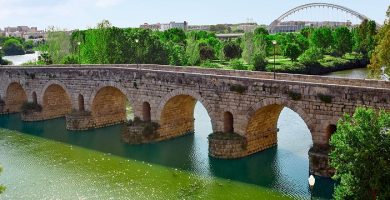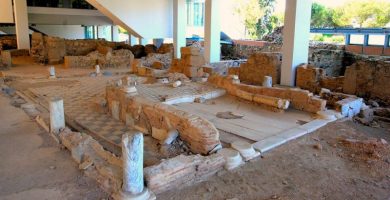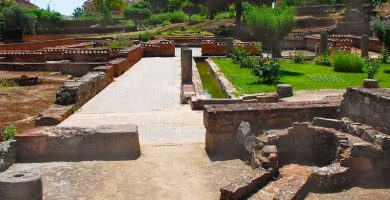
One of the most captivating historical monuments in Mérida is the Trajan’s Arch, an ancient Roman arch that serves as a window into the city’s rich history and its influence during the Roman era. This article provides an in-depth look at the Trajan’s Arch, delving into its history, architecture, and cultural significance.
Trajan’s Arch: Location and History
The Trajan’s Arch occupies a pivotal position within the urban layout of the ancient Emérita Augusta.
It was situated atop the Cardo Maximus, one of the city’s main thoroughfares.
Contrary to what its name suggests, the arch has no connection with Emperor Trajan; its name comes from a commemorative inscription lost centuries ago.
The arch was more likely an entrance to the Provincial Forum, built during the reign of Emperor Tiberius.
Architecture and Features

Structure
The arch is constructed from granite, and only its central structure remains.
Its design includes two independent and parallel semi-circular arches, joined by rectangular blocks about 3.20 meters in length, acting as lintels.
The arch stands at a height of 14 meters and spans 5.70 meters in width, with an opening of 8.70 meters.
Foundation and Decoration
The arch sits atop a solid structure of granite ashlars. The foundation was uncovered during an excavation on the right side and remains concealed beneath the original Roman pavement.
Regrettably, many decorative elements, such as marble plaques, cornices, reliefs, inscriptions, and sculptures, have been lost over time.
Changes and Reconstructions
The arch has undergone numerous changes throughout the centuries. Studies like those conducted by Manuel Villena in the 18th century, commissioned by King Charles IV, have provided invaluable insights into its structure and alterations.
Cultural and Touristic Importance

Trajan’s Arch stands as an architectural testament to Mérida’s prominence as a significant administrative hub, both during Roman times and in subsequent eras.
Although Mérida went through various phases, including Muslim domination and Christian reconquest, the arch remains as an enduring symbol of its historical significance.
More of Merida’s historical heritage

Roman Theater of Merida

Mérida Roman Amphitheater

Roman Circus of Merida

Moorish Alcazaba of Merida

Roman Bridge of Merida over the Guadiana river

Co-cathedral of Santa María la Mayor of Mérida

Los Milagros de Merida Aqueduct

Roman Temple of Diana in Mérida

Casa del Mitreo House in Mérida

Portico of Merida’s Municipal Forum

Morería de Mérida Archaeological Site

Plaza de España in Mérida

Basilica of Santa Eulalia in Mérida

National Museum of Roman Art of Mérida

San Lázaro Aqueduct in Mérida

Merida Amphitheater House

Mérida’s Xenodoquium

Roman Bridge over the Albarregas

Círculo Emeritense in Mérida

Mérida City Hall

Bullring of Mérida
